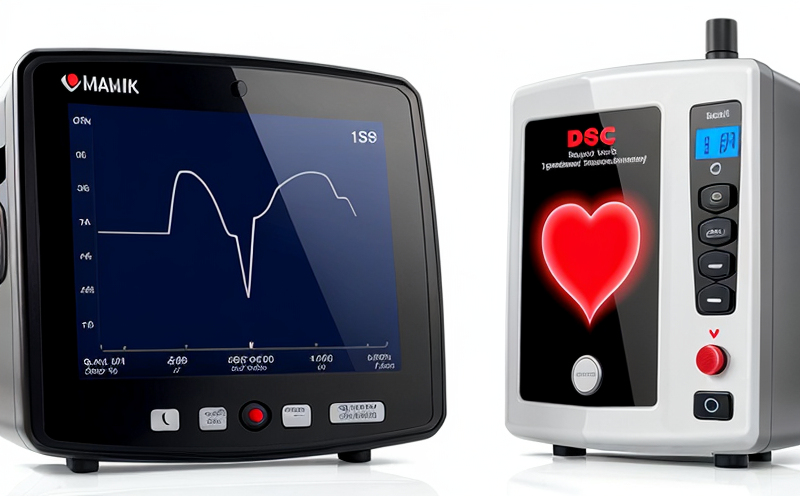ISO 5840 Transcatheter Heart Valve Leakage Resistance Testing
The ISO 5840 standard is a critical component of ensuring the safety and efficacy of transcatheter heart valves. This testing methodology focuses on evaluating the leakage resistance characteristics of these devices, which are paramount for preventing blood backflow and maintaining hemodynamic stability.
Transcatheter heart valves are designed to replace malfunctioning native or previously implanted heart valves through minimally invasive surgical procedures. The primary goal is to minimize patient trauma while achieving effective hemodynamic performance. Leakage resistance testing ensures that these devices function optimally by preventing blood from flowing back into the valve, which could lead to complications such as valve regurgitation.
The ISO 5840 protocol involves several key steps in its implementation:
- Selection of appropriate test specimens
- Preparation of the specimens according to specified procedures
- Application of controlled pressure to induce leakage at specific points on the valve
- Measurement and analysis of the amount and rate of leakage
The testing apparatus typically consists of a specialized hydraulic or pneumatic system capable of applying precise pressures. The specimens are mounted in such a way that they replicate the physiological conditions under which the valves will operate during deployment.
The acceptance criteria for ISO 5840 testing are stringent, reflecting the critical nature of these devices. Valves must demonstrate negligible leakage at specified pressure levels to pass this test. This ensures that patients using these devices receive effective and safe treatment without risk of complications related to valve failure or malfunction.
Understanding the importance of this test is crucial for quality managers and compliance officers within medical device manufacturing companies. By adhering to ISO 5840 standards, manufacturers can ensure their products meet the highest levels of safety and efficacy required by regulatory bodies worldwide.
Applied Standards
The primary standard applied in this testing process is ISO 5840:2019, which provides comprehensive guidelines for the leakage resistance testing of transcatheter heart valves. This international standard ensures consistency and accuracy across different laboratories and manufacturing facilities.
In addition to ISO 5840, other relevant standards include:
- ISO 13485: Quality management systems for medical devices
- ISO 10993: Biological evaluation of medical devices
- EN ISO 14971: Application of risk management to medical devices
These standards provide a framework for ensuring that all aspects of medical device manufacturing, from design and development through production and post-market surveillance, meet the highest safety and quality standards.
The combination of these standards ensures not only compliance with regulatory requirements but also enhances patient safety by minimizing the risk of adverse events associated with valve failure or improper function.
Industry Applications
| Application | Description |
|---|---|
| Bioengineering Research | Development of new transcatheter heart valves and evaluation of their performance. |
| Quality Assurance | Verification that manufactured valves meet the specified leakage resistance criteria. |
| Regulatory Compliance | Demonstration to regulatory bodies that products comply with international safety standards. |
| Risk Assessment and Management | Evaluation of potential risks associated with valve design and function, ensuring they are minimized during use. |
| Post-Market Surveillance | Ongoing monitoring to assess the long-term performance and safety of implanted valves in real-world clinical settings. |
| Training and Education | Use in educational programs for medical device engineers, quality assurance personnel, and regulatory professionals. |
| Research Collaboration | Promotion of collaborative research projects between academia, industry, and healthcare providers to advance valve technology. |
The application of ISO 5840 testing across these various sectors underscores the importance of this standard in ensuring patient safety and device efficacy. By adhering to these stringent testing protocols, manufacturers can ensure that their transcatheter heart valves are both safe and effective.
Use Cases and Application Examples
The ISO 5840 standard finds its application in diverse scenarios within the medical device industry. One of the most common use cases is during the development phase, where bioengineers and researchers employ this testing method to refine valve designs. For instance, a team developing a new transcatheter heart valve may conduct multiple iterations of ISO 5840 tests to identify optimal materials and configurations that minimize leakage.
Quality assurance teams play a crucial role in ensuring that the valves meet stringent performance criteria before they reach the market. They use this test extensively to catch any potential issues early on, reducing the risk of post-market complications. Regulatory bodies also require compliance with ISO 5840 during premarket reviews and inspections.
Risk assessment and management teams utilize these tests to evaluate the safety profile of valves throughout their lifecycle. Post-market surveillance programs often involve periodic testing to monitor valve performance in real-world clinical settings, ensuring that any issues are promptly addressed.
Education and training programs frequently incorporate ISO 5840 testing as a key component to familiarize students and professionals with best practices in valve testing. Collaborative research initiatives between industry partners and academic institutions also leverage this standard for advancing the field of cardiovascular device technology.





